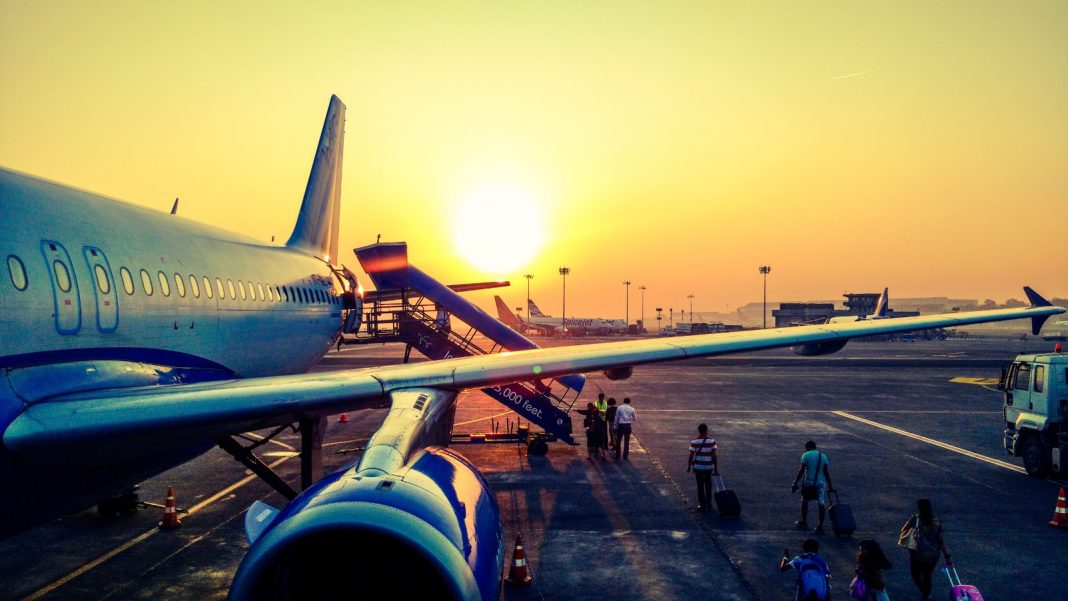by: Danny Brier On: 28, May 2019

Flight bans in lockdown countries and cancelled trips from concerned customers in others have already impacted the world’s airlines and will have a knock-on effect on MROs, OEMs and Aerospace suppliers.
Following the collapse of Flybe and reports that easyJet and Ryanair could lose up to 30% of their total business value, airlines internationally are facing damage worth $113 billion due to the coronavirus. More than half of commercial fleets around the world are currently grounded, leaving almost 20,000 airplanes on the tarmac or in hangars waiting for good news from governments.
With global lockdowns and public safety measures set to continue for the foreseeable future, Aerospace & Aviation leaders are positioned to expect significant change to business. Here’s how airlines can secure passenger safety, hire top talent and return to business growth and expansion plans after the pandemic.
Revolutionise Health & Safety
Airport and airplane hygiene is fast becoming an urgent concern for industry workers, crew, pilots and would-be travellers. After 300 American pilots received positive test results for the coronavirus, their colleagues are appealing to US President Trump to create mandatory legislation in response to the pandemic. Airline employees around the world have voiced their concerns on shortages of Personal Protective Equipment (PPE), and governments globally are debating controversial quarantine plans that vary significantly across countries and continents.
Industry regulators have already put plans into place to help businesses and workers find a ‘new normal’. The European Union Aviation Safety Association (EASA) has released interim guidance on aircraft cleaning and disinfection that issued two Safety Directives for member states and third country operators that mandate the disinfection of aircraft after each flight arriving from high risk areas. The International Air Transport Association (IATA) updated its guidelines to prevent the spread of disease, which recommend ‘targeted and detailed prevention and control measures’ including approved airworthy cleaning and disinfection products.
Investing in decontamination innovation will best serve carriers and customers long after the COVID-19 pandemic. Whilst not all infectious diseases are fatal, the thousands of illnesses spread every year damage the global economy – sick staff cost British companies alone £77billion every year – disrupt projects and delay growth and expansion plans. The speed of disease transmission in closely populated areas such as airports, airplanes and shuttle buses means that serious illnesses can travel across thousands of people in only a number of hours. Hygiene and decontamination processes will help revolutionise the continued fight to improve health and safety across industries and geographies.
Luftavia are one such Aviation business that has begun new innovations in decontamination. An EASA-145 approved line maintenance organisation, Luftavia launched their lightweight decontamination equipment in March with the approval of the Centres for Disease Control & Prevention (CDC) and Federal Aviation Administration (FAA).
Revolutionise Recruitment Processes
Mass outbreaks and subsequent business damage across the globe has seen millions of jobs lost in recent months, and millions more clinging on through furlough arrangements. In Britain alone, unemployment increased from 50,000 to 1.35million and the number of job vacancies edged lower for the tenth consecutive month. With the job losses seen from Covid-19, the Aviation skills shortage will become an event more urgent problem.
Prior to the 2020 crisis, two in five UK Aviation leaders named a shortage of technical skills as their most pressing business problem. International demand for skills in Maintenance, Repair and Operations (MRO) is set to overtake predicted supply in the next decade. Businesses across the sector globally will need to recruit over 750,000 Mechanical Engineers, Civil Engineers and Design Engineers, and Aircraft Technicians in the next 20 years.
Technicians and senior leaders in technical sectors possess a wealth of transferable skills and experience that can easily be applied across sub-sectors or different industries altogether. Companies that fall under the categories of Aviation, Automotive, Engineering and Marine are increasingly widening their talent pools to other industries that closely align in similarity of manufacturing and production. Changing requirements does not mean lowering standards: flexible and sound selection processes led by industry experts, paired with high quality training and mentoring conducted in-house, can identify potential talent from other sectors and develop existing skillsets.
Diverse talent pools also present the greatest opportunity to harness unprecedented skills and experience. In 2018 McKinsey reported that 40% of women in senior technical roles are the only women in their Boardroom or team, and disappointingly just 8.5% of senior Directors and Executives in the technical sector are of a BAME (Black, Asian & Minority Ethnic) background. Only 8% of the current engineering workforce is female, and despite students of ethnic minorities accounting for 25% of university engineering graduates, only 6% take up engineering careers.
At the rate of current representation, airlines will have to work fast to attract greater numbers of minority groups into entry-level and Graduate roles. Whilst the majority of leadership teams do not consciously operate discriminatory recruitment practices, many are inexperienced in reaching young diverse talent pools across gender, race, nationality, sexuality, religion and socio-economic background. Young people are the most diverse demographic in recent history: airline representatives can partner with schools and colleges to take an active role in careers education, and engage young people in Aviation by showing them the wealth of available possibilities.
To create a positive employer brand and reach future employees across diverse demographics and different sectors, CEOs can publicly commit to supporting their workforce. Financial aid with required qualifications and licences, proactive support with visas and work permits and temporary accommodation for contractors will mean skilled individuals are more inclined and more able to join your workforce. An inclusive employer brand that actively engages diverse recruits, asks for and listens to their experiences and perceptions and uses them to improve hiring strategies will be amongst the top performers in a competitive recruitment market.


